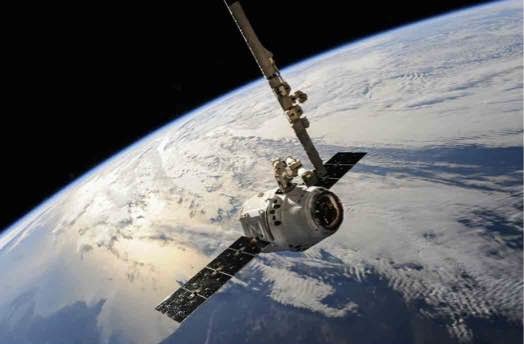
Space exploration has taken giant leaps forward, with companies like SpaceX launching massive constellations of satellites. But with this progress comes a new challenge: space debris.
While disposing of malfunctioning satellites seems like a responsible move, scientists are concerned about the potential environmental impact.
The Issue of Space Junk
SpaceX recently announced the removal of 100 Starlink satellites due to a design flaw. The plan is to de-orbit them, meaning they’ll burn up in Earth’s atmosphere. However, atmospheric scientists are worried about the long-term effects of such practices. Their concern stems from the discovery of potential ozone-depleting metals from spacecraft in the crucial stratospheric layer.
The Growing Traffic Jam in Low Earth Orbit
The number of satellites orbiting Earth is rapidly increasing, with Starlink alone having over 5,000 spacecraft. This congestion raises the urgency of debris removal. Current regulations require removing defunct satellites within a specific timeframe, either by moving them to higher “graveyard orbits” or burning them up in the atmosphere.
Controlled vs. Uncontrolled Re-entry
Ideally, satellites are designed to use their remaining fuel and Earth’s gravity for a controlled re-entry, targeting a remote area in the Pacific Ocean known as Point Nemo. However, uncontrolled re-entries leave the burning process to chance.
Space Agencies and Design for Demise
Both NASA and the European Space Agency advocate for “design for demise,” a philosophy that prioritizes building satellites that can both function effectively and break up harmlessly upon re-entry. This balancing act between functionality and environmental responsibility is an ongoing challenge.
Limited Oversight on Re-entry Impact
While satellite operators must demonstrate minimal risk of human impact during re-entry, the potential effects on the upper atmosphere haven’t received much attention. Initially, both the space industry and astrophysicists considered the re-entry of spacecraft particles a negligible environmental threat.
Space Debris vs. Natural Phenomena
The sheer volume of meteoroids entering Earth’s atmosphere daily, along with volcanic ash and industrial pollution, dwarfed the amount of spacecraft debris. This comparison initially downplayed the potential environmental impact.
Are We Overreacting?
The concern from atmospheric scientists stems from research on ozone depletion. The culprit behind the ozone holes wasn’t spacecraft debris, but human-made industrial gases interacting with polar stratospheric clouds. The question now is whether these new particles from spacecraft could influence cloud formation and potentially hinder ozone recovery efforts.
Beyond Ozone Depletion: The Cloud Concern
The bigger worry for scientists like Dr. Dan Cziczo (Purdue University) is the potential for these particles to contribute to the formation of not just polar stratospheric clouds, but also cirrus clouds lower in the atmosphere. These wispy clouds allow sunlight to pass through but trap heat, potentially contributing to global warming.
The Need for More Research
While anecdotal evidence suggests changes in high-altitude polar clouds, the cause remains unclear – natural particles or those from spacecraft? Further research is crucial to understand the true impact of space debris on our atmosphere.
The Delicate Balance Between Progress and Precaution
Balancing innovation with environmental responsibility is a constant struggle. We need robust research, not sensationalized findings. Waiting for indisputable evidence might be too late, as seen with the historical case of ozone depletion. Finding the right balance is key to ensuring a sustainable future for space exploration and our planet.
